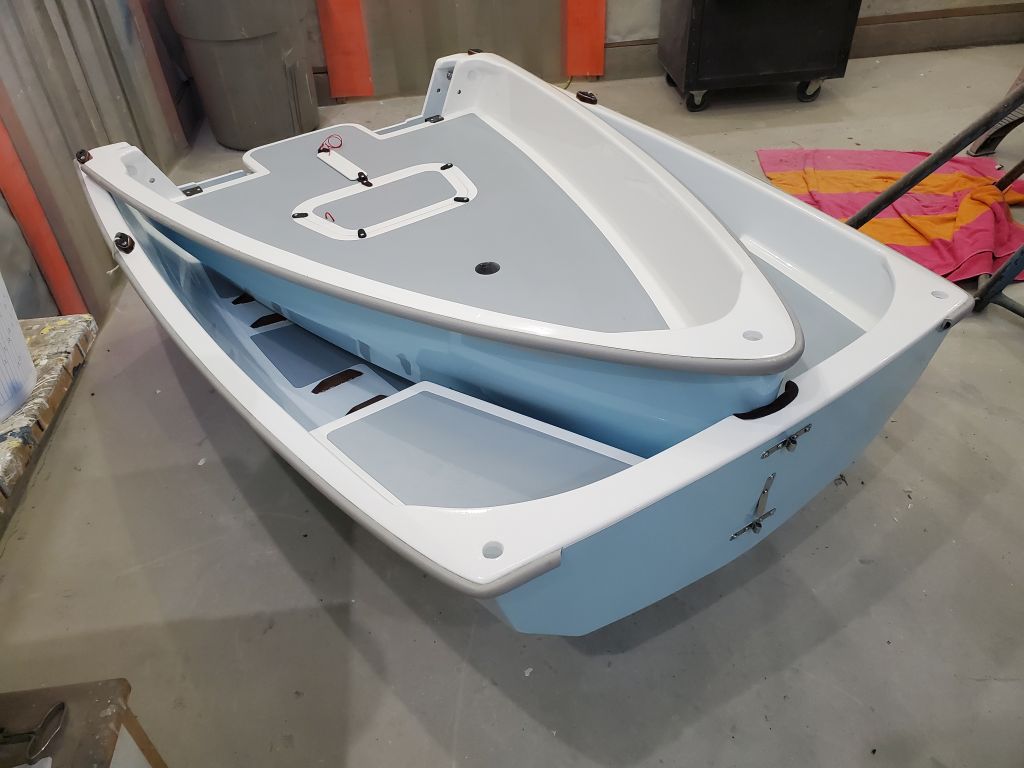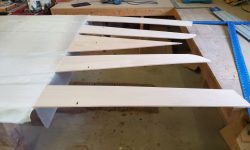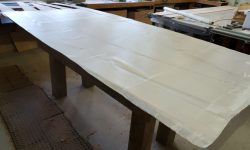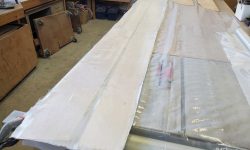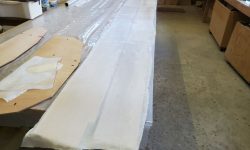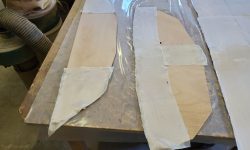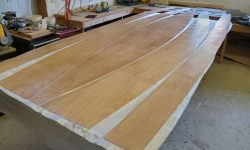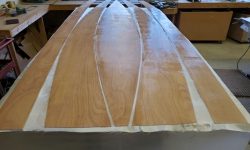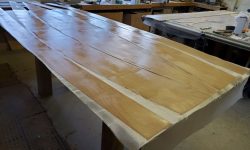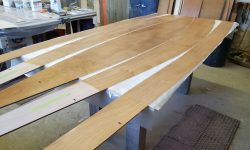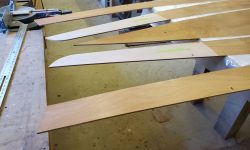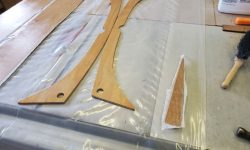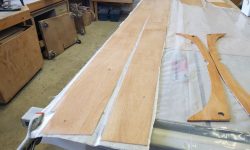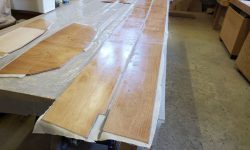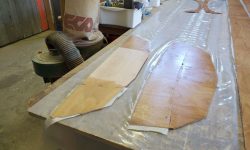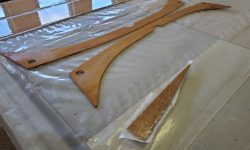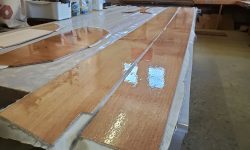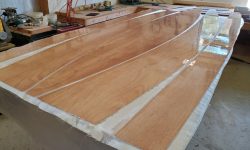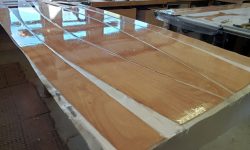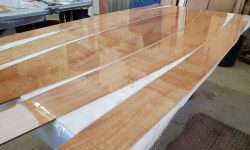October 8, 2024
PT11-5
Tuesday
After lightly scraping and sanding flush the epoxy leftover from filling the nail holes in the panels, I laid out as necessary the 4 oz. fiberglass cloth for sheathing. The five panels on the main bench were covered with a single width of cloth across the entire area, ending at the forward end of the panels where they extended past the bench (eight feet from the stern). The last several feet of the tips of these panels did not require sheathing.
For the two remaining panels, located on another bench, I cut three pieces of cloth wide enough to cover both panels at once (16-1/2″) and laid these out with slight overlaps, all in accordance with the build manual. Then, I used some of the excess scrap length off the end to create two triangular pieces for the sides of the aft bulkhead, and two 5-/2″ strips to cover the top edge and center portion f the inside transom face.
With all the cloth laid out dry, I prepared a batch of epoxy to wet out the cloth, working over all the panels as needed to install the cloth. I also epoxy-coated the plywood tips of the hull panels, except for the two panels closest to the bottom panel, which the manual indicated were best left bare to make bending them into shape for assembly later a bit easier. I also epoxy-coated the two plywood inwhales, and applied a layer of the sheathing to a small wedge-shaped piece eventually intended for the inside of the stem once the boat was assembled. These smaller pieces didn’t have to be dealt with right now, but were suggested in the manual to be done now if time and epoxy allowed. I tried always to read ahead a few pages in the manual beyond the current steps to see what was upcoming and make suitable preparations that might save time later.
I left the epoxied panels to cure for a while before I could come back and apply a second, fill coat of epoxy once the first coat had cured enough.
This took several hours, since the shop was cool and I was using West System’s 207 special clear hardener–which was what the dinghy kit provided–for this job, which apparently didn’t kick as fast as the usual 205 hardener that I normally used. This was the first time I’d done anything time-sensitive with this particular hardener, but I’d not be taken by surprise by this again. In any event, by mid-afternoon, the first installation of epoxy had cured sufficiently to allow me to continue with the fill coat, which was just another coat rolled on to fill the weave of the cloth. With the first application cured a bit past the point of tackiness, but still highly green, I had no issues applying the fill coat; I’d wanted to be sure the first coat was cured enough that rolling on the second wouldn’t tend to pull up the fiberglass.
Now I left the second coat to cure overnight.
Total time billed on this job today: 3 hours


